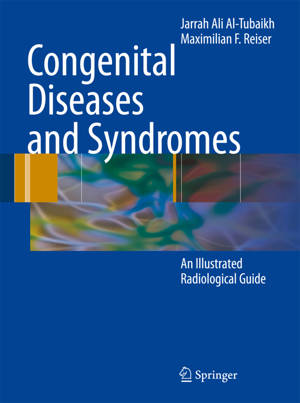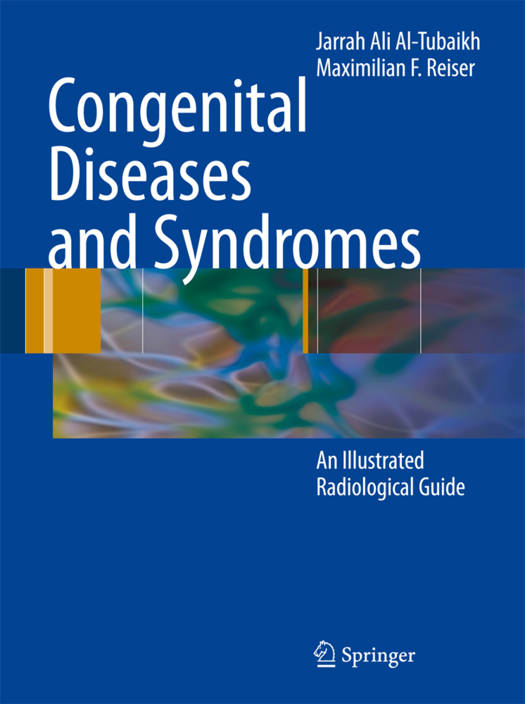
- Afhalen na 1 uur in een winkel met voorraad
- Gratis thuislevering in België vanaf € 30
- Ruim aanbod met 7 miljoen producten
- Afhalen na 1 uur in een winkel met voorraad
- Gratis thuislevering in België vanaf € 30
- Ruim aanbod met 7 miljoen producten
Zoeken
Congenital Diseases and Syndromes
An Illustrated Radiological Guide
Jarrah Ali Al-Tubaikh, Maximilian F Reiser
Hardcover | Engels
€ 210,95
+ 421 punten
Uitvoering
Omschrijving
Radiology to me is an art more than a science; an art of imaging the human body, and an art of extracting information from an image. Radiology today is a vital specialty that almost no other medical specialty can work without. Congenital anomalies and syndromes are complex subjects in all medical specialties. They require knowledge of the normal anatomy and of the embryological basis of organogenesis. The importance of recognizing a congenital malformation or an anomaly, which can be the tip of an iceberg of a more complex syndrome, is to prevent future manifestations of a s- drome if possible or to reduce its severity. Due to this concept, I had an interest in studying how to use the radiological modalities in diagnosing congenital malfor- tions as early as possible. Although radiology offers very powerful tools for diag- sis, the basics of medicine are still the main tools to be used for diagnosis. History, observation, clinical examination, and laboratory investigations are essential elements for diagnosis, which need to be used before radiology investigations are initiated. The idea of this book is based on a simple principle: it is to link radiology to these basic medical tools. The book is written for junior radiologists, radiology students, and doctors interested in congenital malformations and syndromes in any specialty. Each disease is represented with a de? nition, description, etiology, diagnostic cri- ria, main symptoms, and its typical diagnostic radiological features on the modern radiological modalities available today.
Specificaties
Betrokkenen
- Auteur(s):
- Uitgeverij:
Inhoud
- Aantal bladzijden:
- 201
- Taal:
- Engels
Eigenschappen
- Productcode (EAN):
- 9783642001598
- Verschijningsdatum:
- 17/06/2009
- Uitvoering:
- Hardcover
- Formaat:
- Genaaid
- Afmetingen:
- 198 mm x 264 mm
- Gewicht:
- 839 g

Alleen bij Standaard Boekhandel
+ 421 punten op je klantenkaart van Standaard Boekhandel
Beoordelingen
We publiceren alleen reviews die voldoen aan de voorwaarden voor reviews. Bekijk onze voorwaarden voor reviews.











